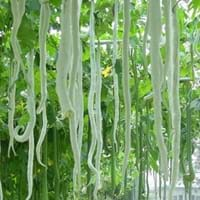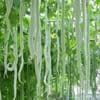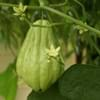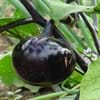Life Span
Annual
Annual and Perennial
Type
Vegetable
Bulb or Corm or Tuber
Origin
India, Philippines, Southeast Asia
Central America, South America
Types
Not Available
Vine, Flowering plant
Number of Varieties
Not Available
Habitat
Loamy soils, Moist Soils, Subtropical climates
All sorts of environments, Along Railroads, Banks, Moist Ditches, Roadsides, rocky banks of streams
USDA Hardiness Zone
5-7
10-13
Sunset Zone
A1, A2, A3, H1, H2, 1a, 1b, 2a, 2b, 3a, 3b, 4, 5, 6, 7, 8, 9, 10, 11, 12, 13, 14, 15, 16, 17, 18, 19, 20, 21, 22, 23, 24
21,22
Habit
Vining/Climbing
Vining/Climbing
Minimum Width
Not Available
Flower Color
Yellow, Orange, Dark Green
Purple, Rose
Flower Color Modifier
Bicolor
Bicolor
Fruit Color
Yellow, Dark Green
Not Available
Leaf Color in Spring
Green, Dark Green
Purple, Dark Green, Black
Leaf Color in Summer
Green, Dark Green
Light Green
Leaf Color in Fall
Green, Dark Green
Several shades of Green
Leaf Color in Winter
Not Available
Light Green
Leaf Shape
Palmate
Acicular
Plant Season
Summer, Fall
Spring, Summer, Fall, Winter
Sunlight
Full Sun
Full Sun, Partial Sun
Growth Rate
Very Fast
Very Fast
Type of Soil
Loam, Sand
Clay, Loam, Sand
The pH of Soil
Neutral
Acidic, Neutral, Alkaline
Soil Drainage
Well drained
Well drained
Bloom Time
Indeterminate
Late Spring, Early Summer, Summer, Late Summer, Early Fall, Fall, Late Fall
Tolerances
Drought
Drought
Where to Plant?
Ground
Container, Ground
How to Plant?
Seedlings
Cuttings, Leaf Cutting, Tuber propagation
Plant Maintenance
Medium
Medium
Watering Requirements
Keep ground moist, Requires regular watering
Keep the Soil well drained, Needs very little water
In Summer
Lots of watering
Lots of watering
In Spring
Moderate
Moderate
In Winter
Average Water
Average Water
Soil pH
Neutral
Acidic, Neutral, Alkaline
Soil Type
Loam, Sand
Clay, Loam, Sand
Soil Drainage Capacity
Well drained
Well drained
Sun Exposure
Full Sun
Full Sun, Partial Sun
Pruning
Cut out old flower stalks, Remove dead or diseased plant parts
Remove damaged leaves, Remove dead branches, Remove dead leaves
Fertilizers
Nitrogen, N-P-K balanced liquid fertilizer, Potassium
All-Purpose Liquid Fertilizer
Pests and Diseases
Army-worms, Bacterial leaf spot, Blight, Cucumber beetles, Cucumber mosaic, Cutworms, Fusarium leaf spot, Red spider mite
Red blotch
Plant Tolerance
Full Sun, Salt and Soil Compaction
Drought
Flower Petal Number
Single
Single
Foliage Texture
Coarse
Coarse
Foliage Sheen
Matte
Matte
Attracts
Bees, Flies, Flying insects
Aphids, Beetles, Cutworms, Insects, Mites, Whiteflies
Allergy
Hypoglycaemic Coma, Irregular Heart Rhythm, Miscarriage
Abdominal pain, allergic reaction, Nausea, Skin rash, Twitching of face
Aesthetic Uses
Not Used For Aesthetic Purpose
Not Used For Aesthetic Purpose
Beauty Benefits
Glowing Skin, Moisturizing, Nourishes scalp
Not Available
Environmental Uses
Food for animals
Air purification
Medicinal Uses
Diabetes, Gastrointestinal disorders, Jaundice, Laxative, Leprosy, Weight loss
Cures constipation, Fiber, Low calories, lowering blood pressure, Potassium, ß-carotene, Vitamin A, Vitamin C
Part of Plant Used
Fruits, Leaves
Leaves, Root, Shoots, Stem, Tuber
Other Uses
Cosmetics, Culinary use, Repellent
Starch, Used As Food, Used as Ornamental plant
Used As Indoor Plant
No
Sometimes
Used As Outdoor Plant
Yes
Yes
Garden Design
Dried Flower/Everlasting, Vine
Container, Edible, Groundcover, Hanging Basket, Herb / Vegetable, Mixed Border, Rock Garden / Wall, Vine
Botanical Name
Trichosanthes cucumerina
IPOMOEA batatas 'Blackie'
Common Name
snake gourd, serpent gourd, chichinda, padwal
Blackie Sweet Potato Vine, Sweet Potato Vine
In Hindi
चिचिण्डा
शकरकन्द
In German
Schlangenhaargurke
Süßkartoffel
In French
Trichosanthes cucumerina
Patate douce
In Spanish
snake gourd
Ipomoea batatas
In Greek
φίδι κολοκύθα
Sweet potato
In Portuguese
snake gourd
Batata-doce
In Polish
Gurdlina ogórkowata
Wilec ziemniaczany
In Latin
snake gourd
Ipomoea batatas
Phylum
Magnoliophyta
Tracheophyta
Class
Magnoliopsida
Magnoliopsida
Order
Cucurbitales
Solanales
Family
Cucurbitaceae
Convolvulaceae
Clade
Angiosperms, Eudicots, Rosids
Angiosperms, Asterids, Eudicots
Tribe
Not Available
Not Available
Subfamily
Papilionoideae
Not Available
Number of Species
Not Available
Season and Care of Snake Gourd and Sweet Potato Vine
Season and care of Snake Gourd and Sweet Potato Vine is important to know. While considering everything about Snake Gourd and Sweet Potato Vine Care, growing season is an essential factor. Snake Gourd season is Summer and Fall and Sweet Potato Vine season is Summer and Fall. The type of soil for Snake Gourd is Loam, Sand and for Sweet Potato Vine is Clay, Loam, Sand while the PH of soil for Snake Gourd is Neutral and for Sweet Potato Vine is Acidic, Neutral, Alkaline.
Snake Gourd and Sweet Potato Vine Physical Information
Snake Gourd and Sweet Potato Vine physical information is very important for comparison. Snake Gourd height is 60.00 cm and width 90.00 cm whereas Sweet Potato Vine height is 15.00 cm and width Not Available. The color specification of Snake Gourd and Sweet Potato Vine are as follows:
Snake Gourd flower color: Yellow, Orange and Dark Green
Snake Gourd leaf color: Green, Dark Green
Sweet Potato Vine flower color: Purple and Rose
- Sweet Potato Vine leaf color: Purple, Dark Green and Black
Care of Snake Gourd and Sweet Potato Vine
Care of Snake Gourd and Sweet Potato Vine include pruning, fertilizers, watering etc. Snake Gourd pruning is done Cut out old flower stalks and Remove dead or diseased plant parts and Sweet Potato Vine pruning is done Remove damaged leaves, Remove dead branches and Remove dead leaves. In summer Snake Gourd needs Lots of watering and in winter, it needs Average Water. Whereas, in summer Sweet Potato Vine needs Lots of watering and in winter, it needs Average Water.





